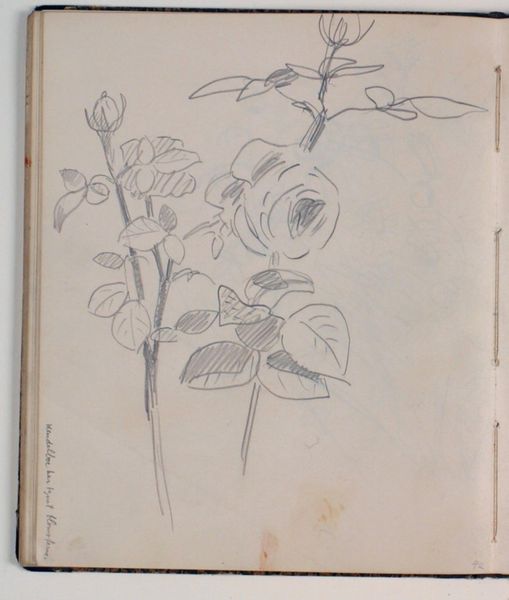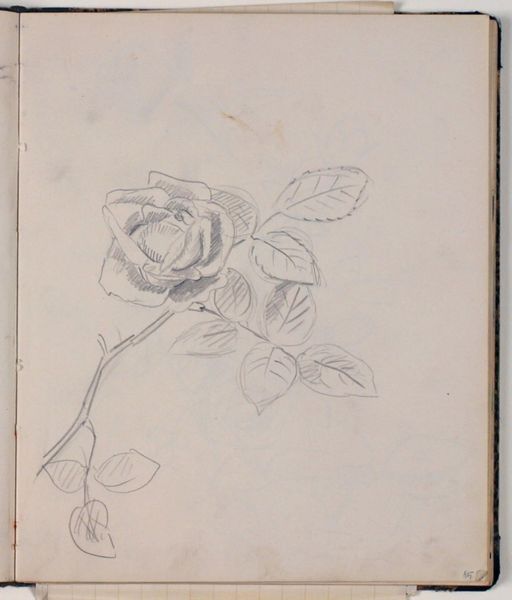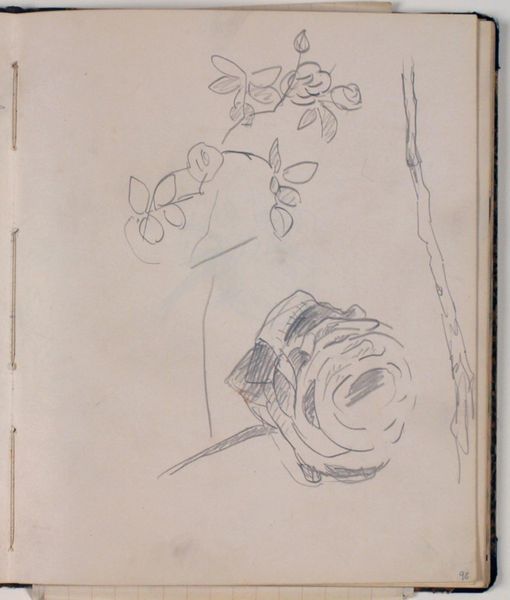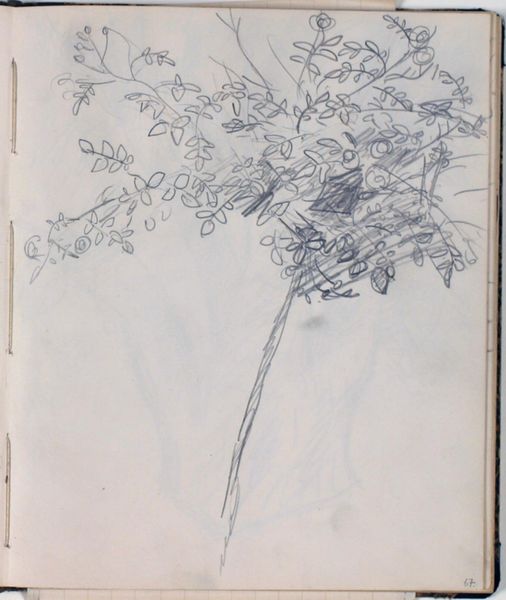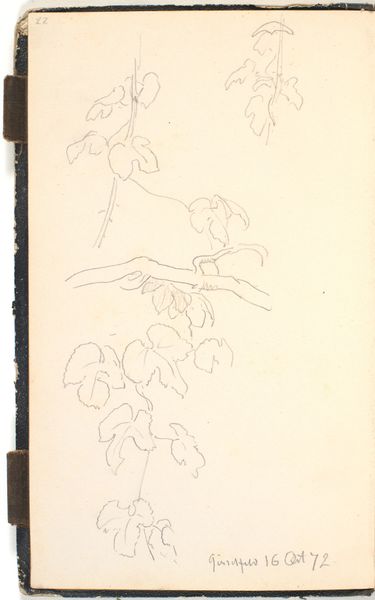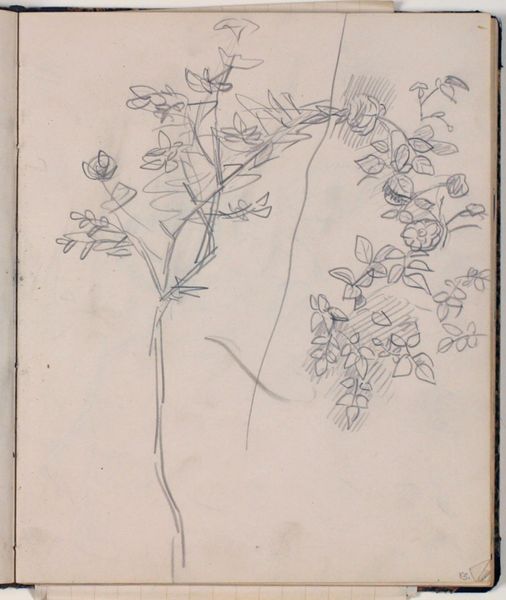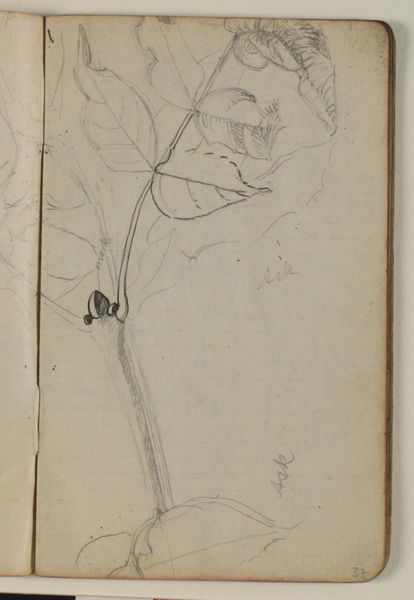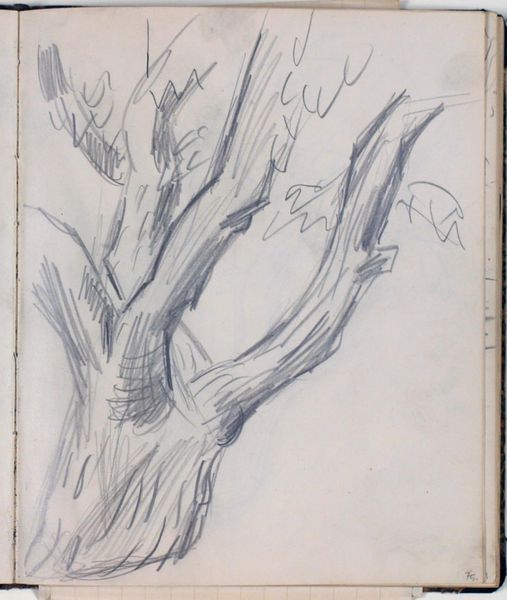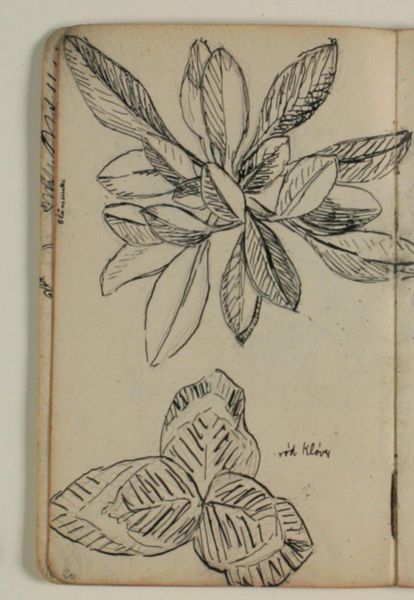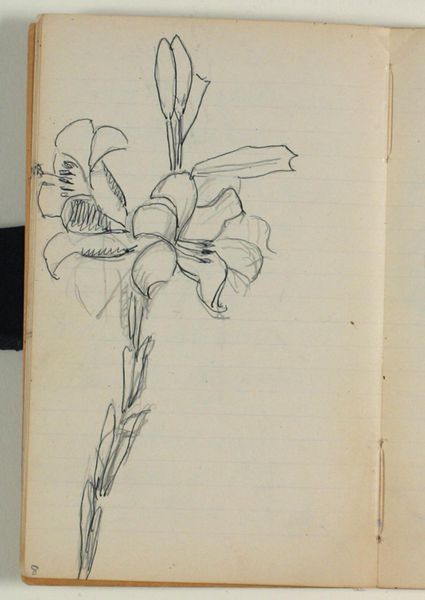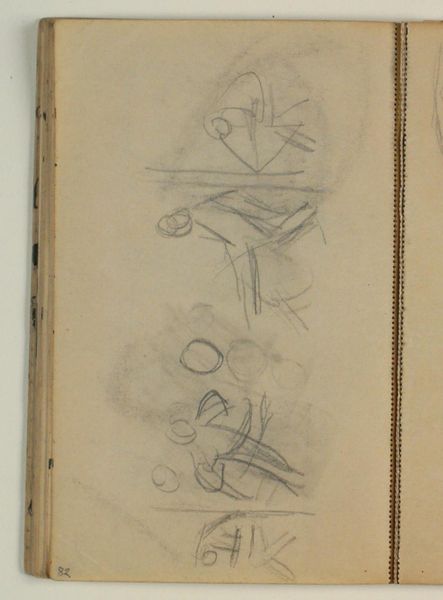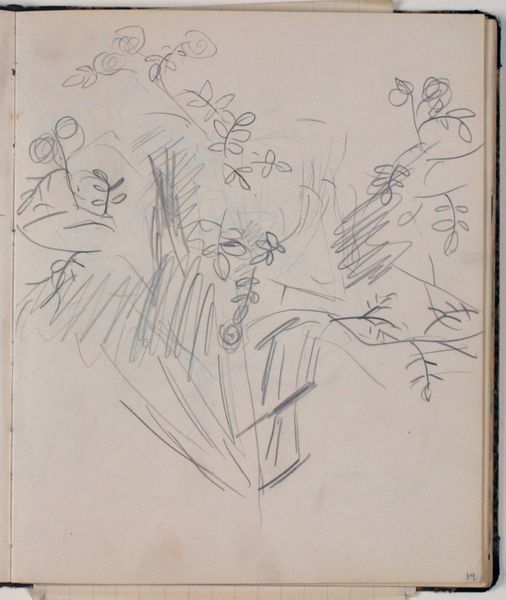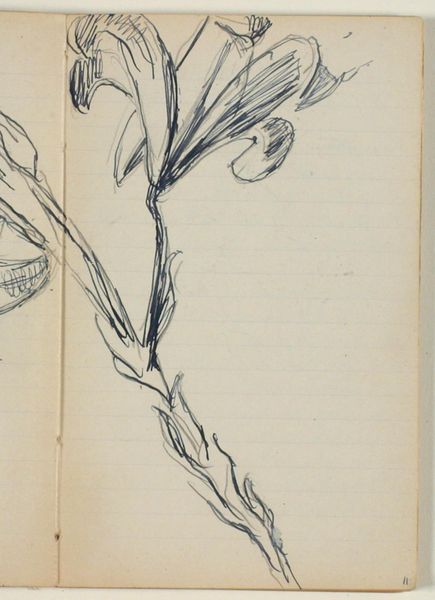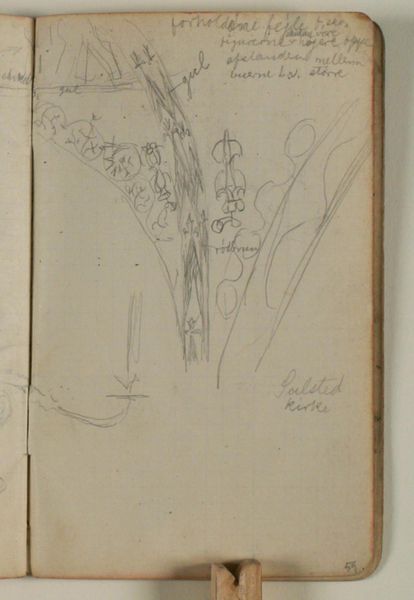
drawing, pencil
#
drawing
#
coloured pencil
#
pencil
#
realism
Dimensions: 226 mm (height) x 185 mm (width) x 112 mm (depth) (monteringsmaal), 221 mm (height) x 184 mm (width) (bladmaal)
Editor: Here we have Niels Larsen Stevns’ “Studies of Roses,” made between 1930 and 1936 using pencil. It feels incomplete, almost like a glimpse into the artist’s sketchbook, doesn’t it? What compositional elements stand out to you? Curator: I observe a strategic arrangement of forms, where the lines' modulation dictates the rhythm and space within the frame. Note how the varying pressure of the pencil generates tonal contrasts, thereby simulating depth on a two-dimensional plane. This economy of line underscores the essence of each floral subject. Editor: So it’s more about how he uses the pencil itself than realistically depicting the roses? Curator: Precisely. Focus on the interplay between positive and negative space and the suggestive nature of the line work. The sketch's value does not rely on mimetic accuracy but on the artist’s ability to evoke form through fundamental artistic tools. How does the composition direct the eye across the page? Editor: My eye definitely jumps from rose to rose. The varying levels of detail create a visual hierarchy, with the lower rose having the most detail and therefore pulling the most focus. Curator: Precisely, note how that single detail change impacts the entire composition. Furthermore, the subtle angles and the organic flow of the stems establish a visual cadence that prevents the sketch from appearing static or predictable. Consider how a deviation from pure realism invites an engagement with the underlying structure of perception. Editor: It’s fascinating to consider this work less as a study of roses, and more as a study of line, shape, and form. It really makes you consider what is essential in representing an image. Curator: Indeed, and the appreciation lies in deciphering how Stevns employs seemingly simple means to convey an aesthetically rich experience.
Comments
No comments
Be the first to comment and join the conversation on the ultimate creative platform.
